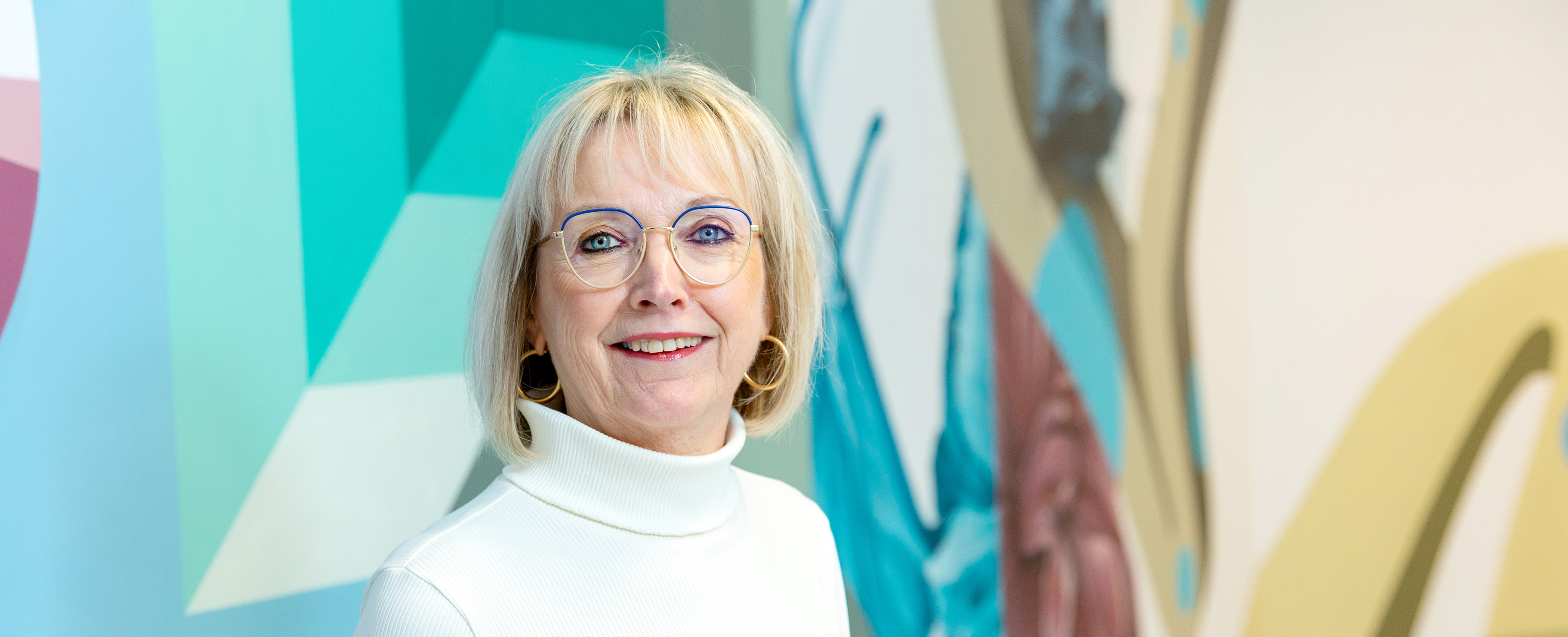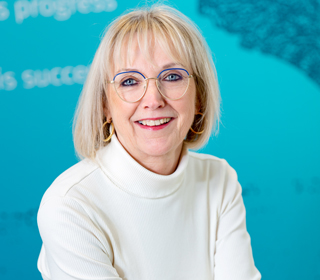Hyacinthe van Bussel about Rooyse Wissel
‘This building really does improve the well-being and recovery of patients’
All eyes are focused on Rooyse Wissel in Oostrum. Netherlands first forensic high-intensive care facility with level-four security.
Since the opening of the new building on 8 December 2020, the Ministry of Justice, the prison services and fellow forensic psychiatric clinics have been looking with keen interest at the very first forensic high-intensive care facility with level-four security to be built in the Netherlands. “The building has been developed on the basis of the principles of a healing environment,” explains Van Bussel. “This means that the building itself contributes to the well-being and recovery of patients.”
Rooyse Wissel was originally a high-security (level four) detention hospital. Van Bussel: “In recent years, however, we have been taking on more and more patients without a court-imposed hospital order. They include patients with less serious sentences, who remain here for a shorter period, and for whom a lower security level suffices. That gave rise to the need for a forensic psychiatric facility (FPK), with level-three security. Moreover, our current isolation unit, where patients in crisis were held separately, was twenty years old. A new isolation method has since been developed, known as forensic high-intensive care, or FHIC. All the more reason to invest in our future.”
Penitentiary specialism needed
Constructing three new FPK departments and the first new-build FHIC with level-four security demands a lot from an architect. “Not everybody is up to the task,” emphasises Van Bussel. “We are working here to create a safer society and embrace the most innovative technology and latest treatment insights. We ultimately decided to construct everything at level-four security. That resulted in a sustainable and flexible building, should the demand for detention under a hospital order increase.”
The design involved a huge amount of technology. Van Bussel: “For example cameras, entrance systems and controlled locking procedures with automatic doors. There are also highly specific requirements when it comes to locks, doors, windows, sanitary fittings, the size of rooms and extra-secure rooms. We chose EGM architects because they have plenty of experience with new-build at this level of security. It is complex, specialist work. EGM is also familiar with all aspects of a healing environment. That became clear during their presentation, and that gave us confidence.”
The building itself contributes to the well-being and recovery of patients
Keeping in contact in crises
The 3,100-m2 new building is separate from the existing building but connected to it by two corridors. Van Bussel: “In the FHIC, additional care is provided for patients who are in crisis, or display seriously disruptive behaviour. With traditional isolation, the patients most in need receive the least amount of attention. However, the FHIC method is based on the idea of remaining in contact, even when patients are isolated. In other words, recovery through contact. That’s why the four new extra-secure rooms contain large windows, ensuring that therapists can always see the patients. And they can intervene immediately if required.”
Calming design
The layout of the FHIC adheres to the principles of a healing environment. “Colour influences our emotions,” explains Van Bussel. “That’s why we chose light and natural hues, since these have a soothing effect. Good sight lines, rounded shapes and soft materials create a sense of calm and space. And they stimulate the comfort and well-being of patients. That in turns leads to a quicker recovery. We also implemented the properties of a healing environment in the FPK and the spaces where staff work. EGM was able to offer us excellent advice on this issue.”
Large areas of fenestration allow plenty of daylight to enter the building. Van Bussel: “That has a positive effect on health, reducing both the length of stays and the use of medicines. Moreover, the sight of nature lowers stress levels and the sense of pain. Both images of nature and the presence real plants help achieve this effect.”
With the principles of a healing environment, we make our work safer without losing sight of the human dimension of care
Safer working
Contact is the key factor in the design of this building. Van Bussel: “We want to adopt an open attitude, tailored to what the patient needs. The architecture helps to ensure that therapists spend as much time as possible working on the department floors instead at their desks. The architect has also considered that carefully. For instance, the general spaces in the FPK, all of which overlook the patio, encourage use by patients. The atmosphere is domestic, bright and spacious.”
The 28 private FPK rooms – divided into three departments – have their own patio overlooking nature. Van Bussel: “We have six medium-care rooms that can be scaled up or down with the help of flexible furniture. If a low-stimulus space is required, we can remove the furniture. This means that patients have to change rooms less often. With the principles of a healing environment, we make our work safer without losing sight of the human dimension of care.”
New building, new sound
Van Bussel is very enthusiastic about the choice of bamboo on the exterior. “The existing building is grey, so it’s great that the new building has some colour.” She also points out the great success of the rounded shapes, the openness and the transparency. “As soon as we’ve completed the outdoor areas with EGM and all the initial teething troubles – which are an inherent part of the first months – have been put right, everybody will be able to see what a unique achievement this is. For us, this innovative, state-of-the-art building symbolizes a new step. Because with this building, Rooyse Wissel covers practically the entire forensic chain. From clinical and outpatient treatment to assisted living. But all with one goal: the make society safer. After all, we’re also part of that society.”
Maud van Gennip, writer and copywriter, interviewed Hyachinte van Bussel in mei 2021

